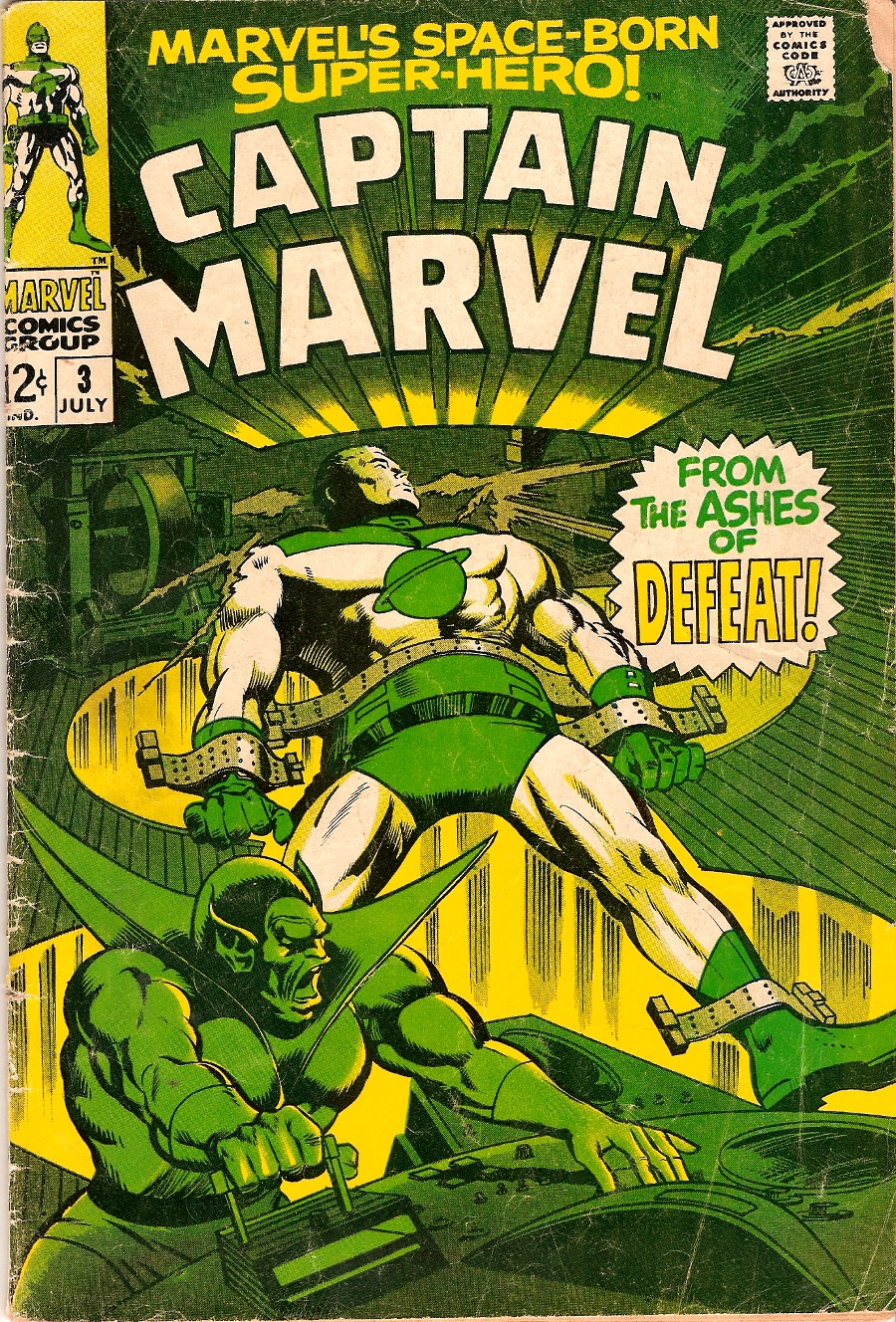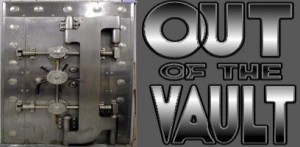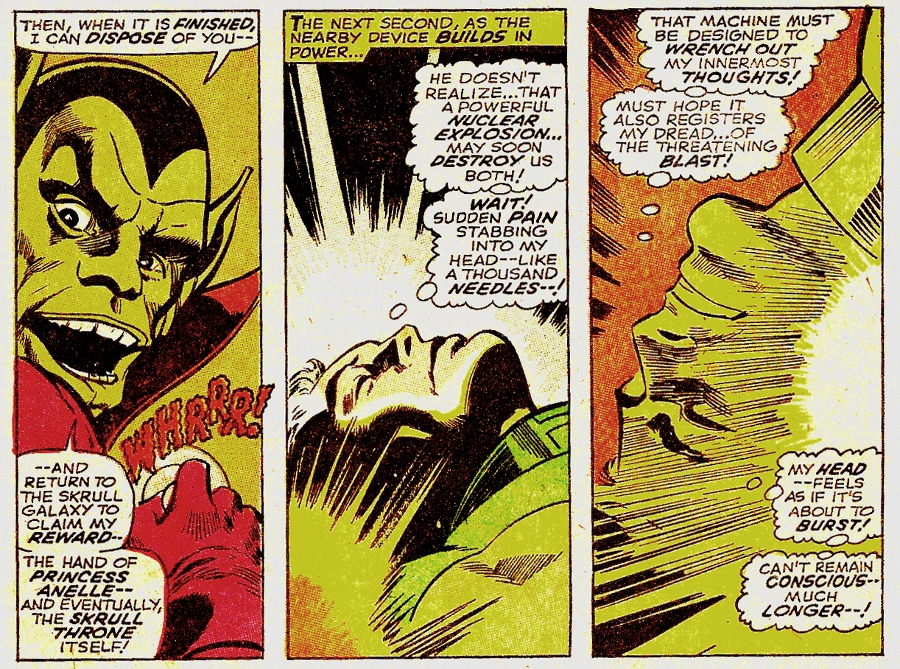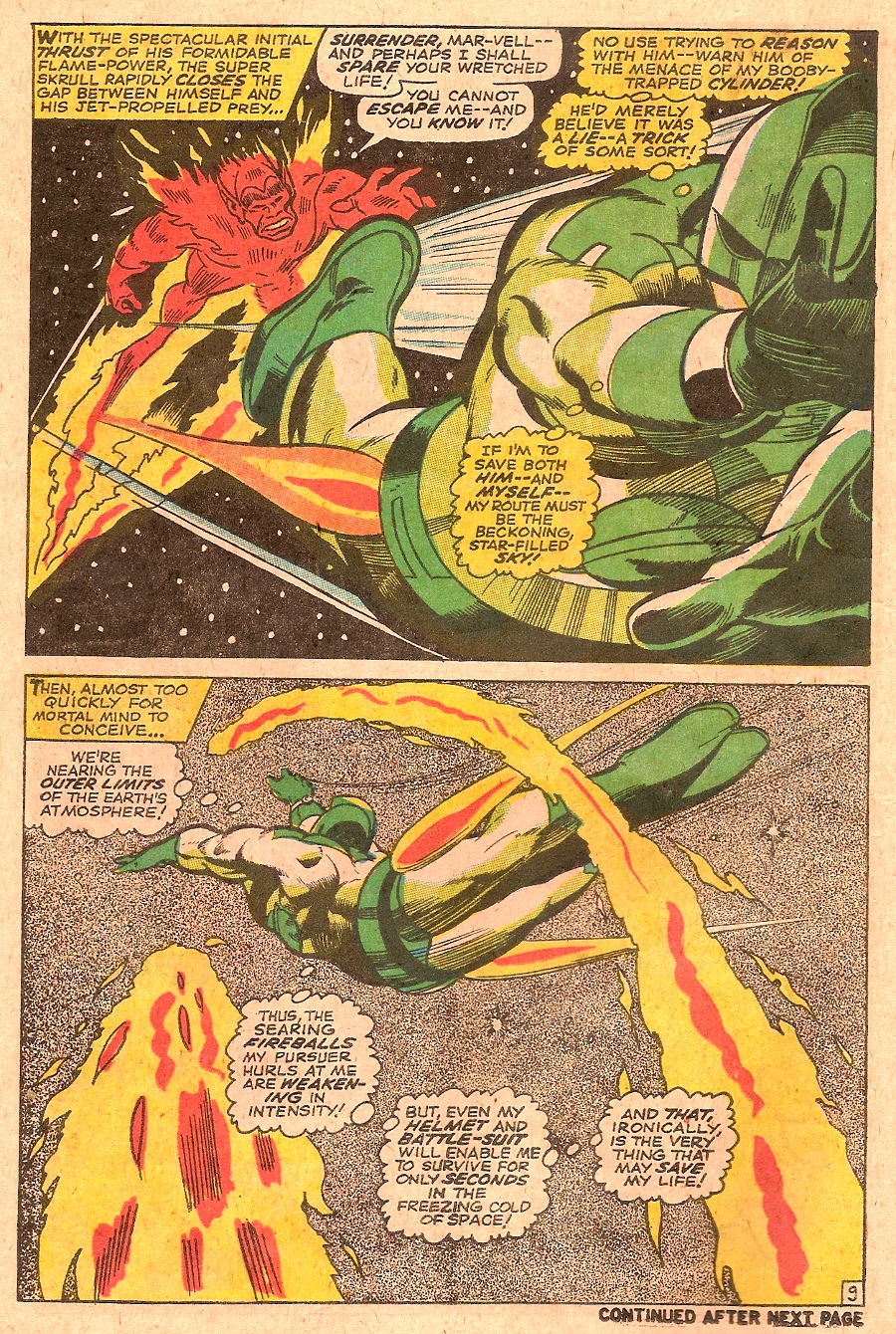 I dumped on Vince Colletta’s inking last week, so I guess it’s only fair that I post one of the stories where I think his inking really works well. Captain Marvel #3, cover-dated July 1968, is in no way a significant issue in comics history, but it is pretty significant for me.
I dumped on Vince Colletta’s inking last week, so I guess it’s only fair that I post one of the stories where I think his inking really works well. Captain Marvel #3, cover-dated July 1968, is in no way a significant issue in comics history, but it is pretty significant for me.
This was, I believe, the first comic book I bought for myself with my own money. My dad had bought me Iron Man #1 a couple of months earlier (a tragic tale which I will relate in full when I finally dig it out of the Vault someday), but I think this was the first one I bought myself. And oddly, it is also a Marvel comic pencilled by Gene Colan and written by Roy Thomas.
I’m not sure what drew my five-year-old self to this particular issue: the hero with the planet Saturn on his chest, or the alien performing despicable scientific experiments, or the weirdly moody green-and-yellow color scheme (with the yellow light even reflecting off the bottom of the logo!). But I bought it and ended up confused  as hell.
If all you know about Marvel’s Captain Marvel (not to be confused with the other Captain Marvel we’ll discuss tomorrow) is the cosmic Jim Starlin hero, or the black woman who was one of the Avengers (or the two or three other Captain Marvels who have appeared more recently), well, this might be confusing. It’ll probably be confusing anyway.
Captain Marvel, or more properly Mar-Vell, was an alien soldier from a race called the Kree who came to Earth to fight in their war against the Skrulls. His super-uniform was a rather dull green and white, but it was his military uniform, not a superhero costume. So as issue three opens, Captain Marvel is a prisoner of the Super Skrull, the alien shapeshifter who can emulate all the powers of the Fantastic Four (as I mentioned in last week’s Super Movies, Johnny Storm’s use of the entire group’s powers was inspired by this guy).
The Super Skrull wants to know Mar-Vell’s orders, so he uses a machine called a Psycho-Probe to read Mar-Vell’s memories. And in this scene, Colletta’s inks enhance Colan’s pencils nicely. Colletta’s work often seemed sketchy, dominated by skinny pen lines, but in this issue, he gets good use out of solid areas of black. And I love the effect of the radiating lines defining Mar-Vell’s face in the third panel.
Mar-Vell manages to escape before the Skrull learns too much and flees the Skrull’s ship. They have an aerial chase highlighted by Colan’s dramatic foreshortening and large panels.
Mar-Vell escapes into the upper atmosphere, searching for the Kree ship where his fellow officers are. However, his commander, Colonel Yon-Rogg, is jealous of the romantic relationship between Mar-Vell and medical officer Una and tries to kill Mar-Vell in space by refusing to activate the homing beacon to lead Mar-Vell to the ship. Mar-Vell manages to reach the ship just as his belt jets are giving out, though, so Yon-Rogg is forced to open the pod bay doors.
But Mar-Vell has no time to waste. He has to rush back down to Earth to retrieve a nuclear bomb he inadvertently left at Cape Kennedy (or the Marvel equivalent–the base is only referred to as The Cape in this issue). The Super Skrull (shapeshifted to look like Mar-Vell’s human secret identity) gains possession of the bomb, but Mar-Vell soon battles him for it.
And though at first it seems as if Mar-Vell will be defeated, he manages to turn the tables on the Super Skrull by using a parabolic mirror to reflect the Skrull’s hypnotic gaze. The Super Skrull hypnotizes himself, and Mar-Vell orders him to leave Earth forever.
So on the one hand, the art by Colan and Colletta was exciting and dynamic, which was good. But on the other hand, I couldn’t understand a thing that was going on. It seemed like a war between good guy aliens (who looked human) and bad guy aliens (who looked like green humans with pointy ears). Except that the good guy aliens weren’t very good guys, either. And I was so young that I may not have even known who the Fantastic Four were (although I might have seen the 1967 TV series by that point–I really can’t remember), so the Super Skrull’s powers were a mystery to me as well.
But the overall impression I got was that Marvel comics were for an older audience. From the complicated storylines to the weaknesses of the heroes (both Captain Marvel #3 and Iron Man #1 started out with the heroes as powerless prisoners) to the slick sophistication of Colan’s artwork, it all said, “This is not for you.”
Which was one reason, I think, that I was a DC kid for so long. I could understand DC, and when I paid for an issue, I didn’t feel as if I’d bought half a story.






